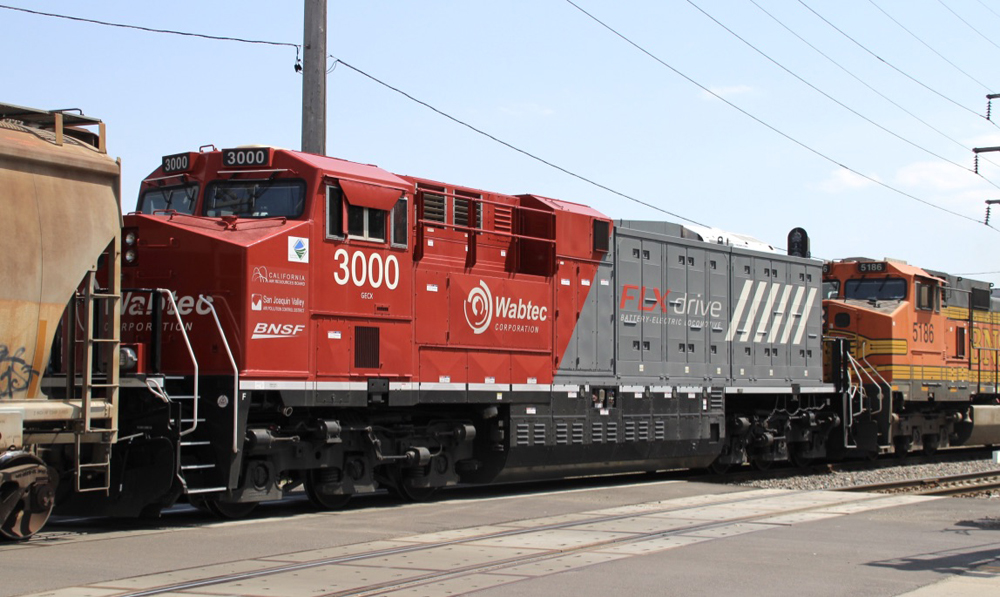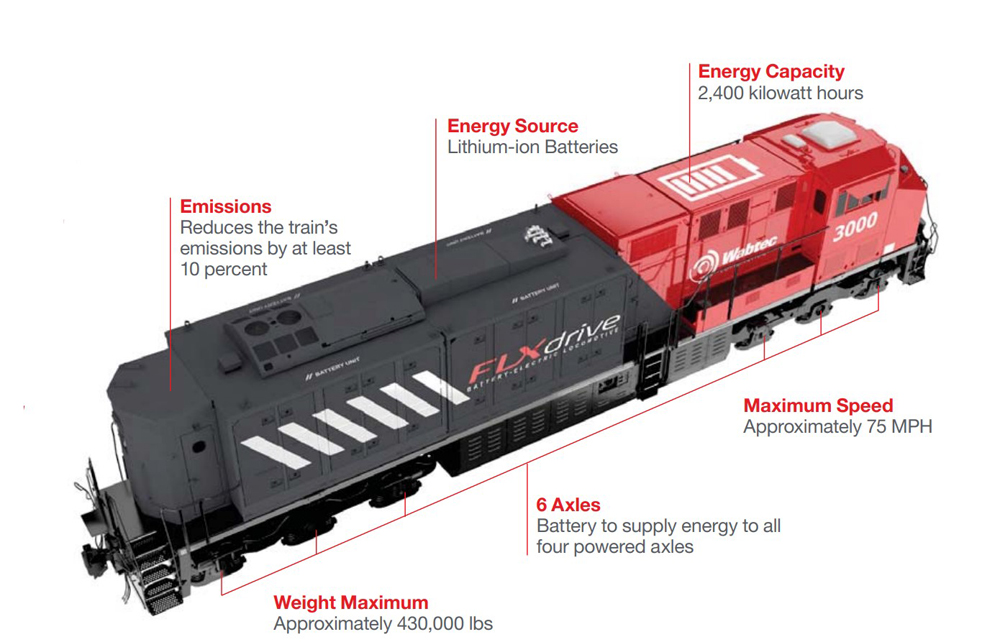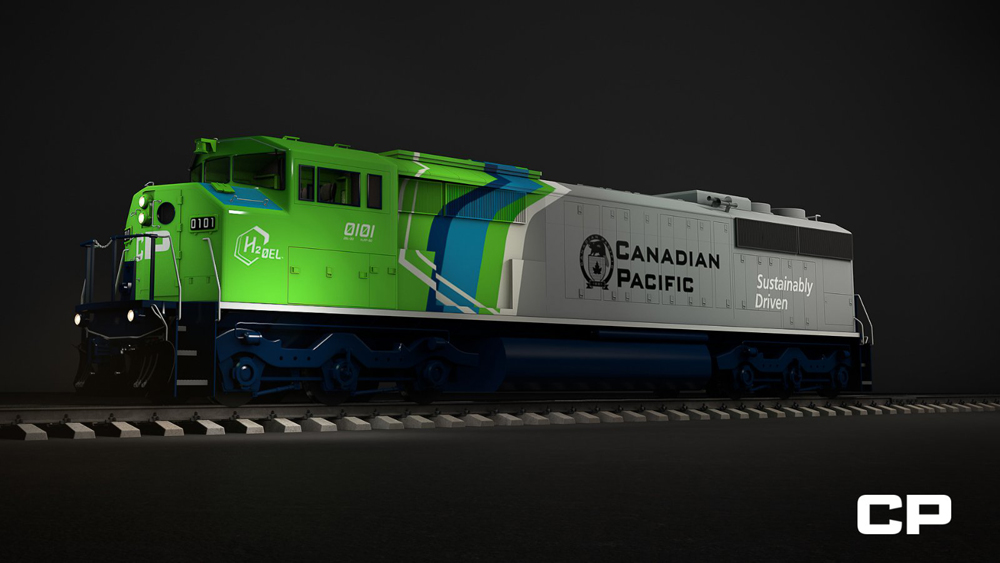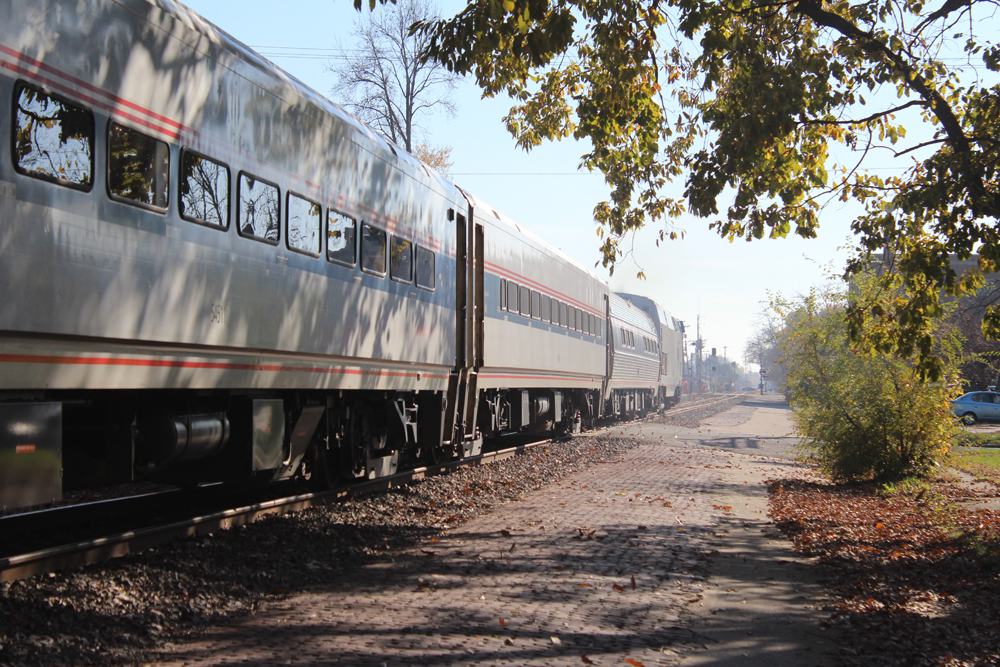
The rail industry has long touted its energy efficiency compared to other modes of transport, as well as the parallel environmental benefits. But with railroads and their customers both placing more focus on combating climate change, an increasing number of projects are under way to develop alternatives to diesel-electric locomotives.

Making the most progress to date is Wabtec’s battery-electric project, which aims to turn conventional locomotives into part of a hybrid consist by pairing diesels with all-battery units. After testing a demonstrator of the FLXdrive concept earlier this year, the company is moving to production of a second-generation version, with Australian mining company Roy Hill and Canadian National each placing order. Reflecting funding from the state of Pennsylvania, the CN locomotive is slated to work on subsidiary Bessemer & Lake Erie.
The FLXdrive test on BNSF Railway in California earlier this year was funded by a $22.6 million grant from two California environmental agencies. It covered more than 13,000 miles and reduced fuel consumption and emissions by 11%, which Wabtec CEO Rafael Santana called “a game-changer in decarbonizing rail.” The demonstrator had 2.4 megawatts of power; the production version will have a battery capacity of more than 6 megawatts and will reduce fuel use and emissions by 30%, the company says.
CP, others also have projects in development

The Wabtec project is the first of the recent spate of alternative-power locomotives to reach the production phase, but it is far from the only such project. Among others, Progress Rail’s Joule battery-electric will be testing soon on Southern California’s Pacific Harbor Line, and Canadian Pacific has said it will have its first hydrogen fuel-cell locomotive before the end of the year. And, in December, BNSF reached agreement to test a hydrogen fuel-cell locomotive to be built by Progress Rail in a partnership that also includes Chevron, which will develop the fueling facilities.
BNSF’s interest in exploring another form of alternative power reflects continuing limitations with battery-electric technology, as John Lovenburg, the railroad’s vice president, environmental, told an industry conference in November.
“If you can get from 2.4 up into the roughly 10-megawatt range, you’re in a place where you could use it for regional operations,” Lovenburg told a group at the American Short Line and Regional Railroad Association convention. “… Long-term for line haul, the technology is not there. We’re going to have to have a breakthrough in energy storage. We’re going to need 20, 30, 40 megawatts of energy for line haul.”
The Canadian Pacific project is bringing together existing technology to convert a diesel-electric to hydrogen fuel-cell technology. CEO Keith Creel says the railroad’s desire is to “prove the concept,” and then share information with locomotive manufacturers and see if they are interested in building production versions. The program, which originally planned to build just one demonstrator, will now produce three, thanks to a $15 million grant from an Alberta environmental agency.
Additional News Wire reading:
“Wabtec, BNSF conclude initial tests of battery-electric locomotive,” April 30, 2021.
“Wabtec says next generation of battery-electric will achieve 30% fuel and emission savings,” May 17, 2021.
“Australian mining firm is first buyer of Wabtec battery-electric,” Sept. 13, 2021.
“CP to build additional hydrogen locomotives …,” Nov. 1, 2021
“CN to purchase Wabtec battery-electric locomotive,” Nov. 4, 2021.
“Pacific Harbor Line to test new Progress Rail battery locomotive,” Nov. 13, 2021.
“Canadian Pacific’s hydrogen fuel cell locomotive to debut …,” Nov. 30, 2021
“BNSF to join Caterpillar, Chevron in hydrogen fuel-cell project,” Dec. 14, 2021.
Previously:
News Wire Top 10: The runners up.
Top 10, No. 9 (tie): The STB and Wall Street.
Top 10, No. 9 (tie): Amtrak sidelines equipment, turns away revenue.
Top 10, No. 8: Climate challenges.
Top 10, No. 7: Railroad crew shortages.














+1 for partial electrification for charging. Particularly in terminals, heavy grades, or other low speed areas where you can get more charge for the distance. Simple plug in units probably can cover yards where local emission are an issue and cut the waste from idling. That seems like an obvious move with no real new tech. Add battery tenders and take advantage of the inevitably improvements in storage density and you can probably get quite far without full blown catenary Save hydro for low density areas.
The RRs are hoping one or more of the new technologies will be less expensive than wire and substations. We will see. Another possibility is to combine battery power with some areas of electrification for recharging without stopping.
Imagine if there were an alternative to diesel electric locomotives that didn’t require any new technology or development, and that could be powered by whatever renewable energy source you want. All it takes is wires and some substations.
Oh wait, that’s too easy.
LOL… Dual-Mode Hydrogen-Electric locomotives would work well for Intercity services that run over a mix of Amtrak/State owned track and private railroads. California is looking into this for their corridor services.